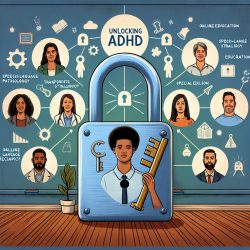Introduction
The acoustic environment in schools plays a crucial role in children's learning experiences. According to the research article, How Children Perceive the Acoustic Environment of Their School, the soundscape within educational institutions can significantly affect students' cognitive performance and overall learning outcomes. This blog aims to explore how practitioners can leverage these insights to improve their skills and enhance learning environments for children.
Understanding the Research
The study conducted by Brännström et al. (2017) utilized a Swedish translation of an evidence-based questionnaire to assess how children perceive their school's acoustic environment. The research involved 149 children aged 9-13 and identified key areas where listening conditions were poorest, such as dining halls and corridors. It also highlighted that student-generated noise within classrooms was more prevalent than external noises like road traffic.
Key Findings and Implications
The research identified five main factors affecting the acoustic environment:
- Ease of Hearing: Crowded spaces like dining halls present significant challenges.
- Annoyance: Noise was most disruptive during tasks requiring high verbal processing, such as tests and reading.
- Impact of Noise: Noise negatively impacts concentration, fatigue, and learning.
- Sounds Inside the Classroom: Student-generated sounds are frequent.
- Sounds Outside the Classroom: Road traffic and adjacent classroom noise are common.
Practical Applications for Practitioners
Practitioners can use these findings to improve school environments by:
- Enhancing Classroom Acoustics: Implement sound-absorbing materials to reduce reverberation and external noise intrusion.
- Managing Classroom Noise: Encourage quieter classroom activities and provide guidelines for noise management.
- Task-Specific Adjustments: Use noise-canceling headphones or create quiet zones during tasks requiring high verbal processing.
- Tailored Support for Special Needs: Recognize that children with special support needs may be more susceptible to noise and require additional accommodations.
Encouraging Further Research
While this study provides valuable insights, further research is needed to explore the impact of acoustic environments on different age groups and educational settings. Practitioners are encouraged to conduct localized studies and share findings to build a comprehensive understanding of how to optimize learning environments acoustically.
Conclusion
Improving the acoustic environment in schools is essential for enhancing children's learning experiences. By applying data-driven insights from research, practitioners can create more conducive learning spaces that support cognitive development and academic success.
To read the original research paper, please follow this link: How Children Perceive the Acoustic Environment of Their School.










